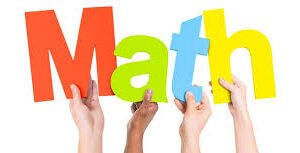YEAR 3 NUMERACY/ MATHEMATICS
- Description
- Curriculum
NUMERACY YEAR 3 TOPIC OUTLINE
Long-term plan
This long-term plan shows the units in this scheme of work and a suggestion of how long to spend teaching each one. The suggested teaching time is based on learners having about 4 to 5 hours of Mathematics per week (about 120 -150 hours per stage). The actual number of teaching hours may vary according to your context.
| Unit | Suggested teaching time |
| Unit 3.1 Numbers to 1000, addition and subtraction | 17% (25 hours) |
| Unit 3.2 Time | 10% (15 hours) |
| Unit 3.3 Shapes and angles | 13% (20 hours) |
| Unit 3.4 Patterns, place value, and rounding | 10% (15 hours) |
Short term plan
1. Numbers to 1000, addition and subtraction
- Estimate the number of objects or people (up to 1000).
- Use knowledge of even and odd numbers up to 10 to recognize and sort numbers.
- Recognize the use of an object to represent an unknown quantity in addition and subtraction calculations.
- Interpret money notation for currencies that use a decimal point.
- Add and subtract amounts of money to give change.
- Recite, read and write number names and whole numbers (from 0 to 1000).
- Understand the commutative and associative properties of addition, and use these to simplify calculations.
- Recognize complements of 100 and complements of multiples of 10 or 100 (up to 1000).
- Estimate, add and subtract whole numbers with up to three digits (regrouping of ones or tens).
- Understand the relative size of quantities to compare and order 3-digit positive numbers, using the symbols =, > and <.
- Reading and recording time
- Choose the appropriate unit of time for familiar activities.
- Read and record time accurately in digital notation (12-hour) and on analog clocks.
- Interpret and use the information in timetables (12-hour clock).
- Understand the difference between a time and a time interval. Find time intervals between the same units in days, weeks, months, and years.
- Shapes and angles
Identify, describe, classify, name, and sketch 2D shapes by their properties. Differentiate between regular and irregular polygons.
Identify, describe, sort, name, and sketch 3D shapes by their properties.
Recognize pictures, drawings, and diagrams of 3D shapes.
Identify both horizontal and vertical lines of symmetry on 2D shapes and patterns.
Compare angles with a right angle. Recognize that a straight line is equivalent to two right angles or a half turn.
Interpret and create descriptions of position, direction, and movement, including reference to cardinal points.
Sketch the reflection of a 2D shape in a horizontal or vertical mirror line, including where the mirror line is the edge of the shape.
- Patterns, place value, and rounding
- 2Estimate the number of objects or people (up to 1000).
Discuss the strategies that learners used to make their estimates and ask them to justify why they think their estimates were reasonable
- 3Forming mathematical questions or ideas
- 4Use knowledge of even and odd numbers up to 10 to recognise and sort numbers.
- 5Recognising an underlying pattern by identifying many examples that satisfy the same mathematical criteria
- 6Recite, read and write number names and whole numbers (from 0 to 1000).
- 7Understand the relative size of quantities to compare and order 3-digit positive numbers, using the symbols =, > and <.
- 8Recognise the use of an object to represent an unknown quantity in addition and subtraction calculations.
- 9Addition and subtraction 1
- 10Choosing an example and checking to see if it satisfies or does not satisfy specific mathematical criteria
- 11Estimate the number of objects or people (up to 1000).
Discuss the strategies that learners used to make their estimates and ask them to justify why they think their estimates were reasonable
- 12Forming mathematical questions or ideas
- 13Use knowledge of even and odd numbers up to 10 to recognise and sort numbers.
- 14Recognising an underlying pattern by identifying many examples that satisfy the same mathematical criteria
- 15Recite, read and write number names and whole numbers (from 0 to 1000).
- 16Understand the relative size of quantities to compare and order 3-digit positive numbers, using the symbols =, > and <.
- 17Recognise the use of an object to represent an unknown quantity in addition and subtraction calculations.
- 18Addition and subtraction 1
- 19Choosing an example and checking to see if it satisfies or does not satisfy specific mathematical criteria



